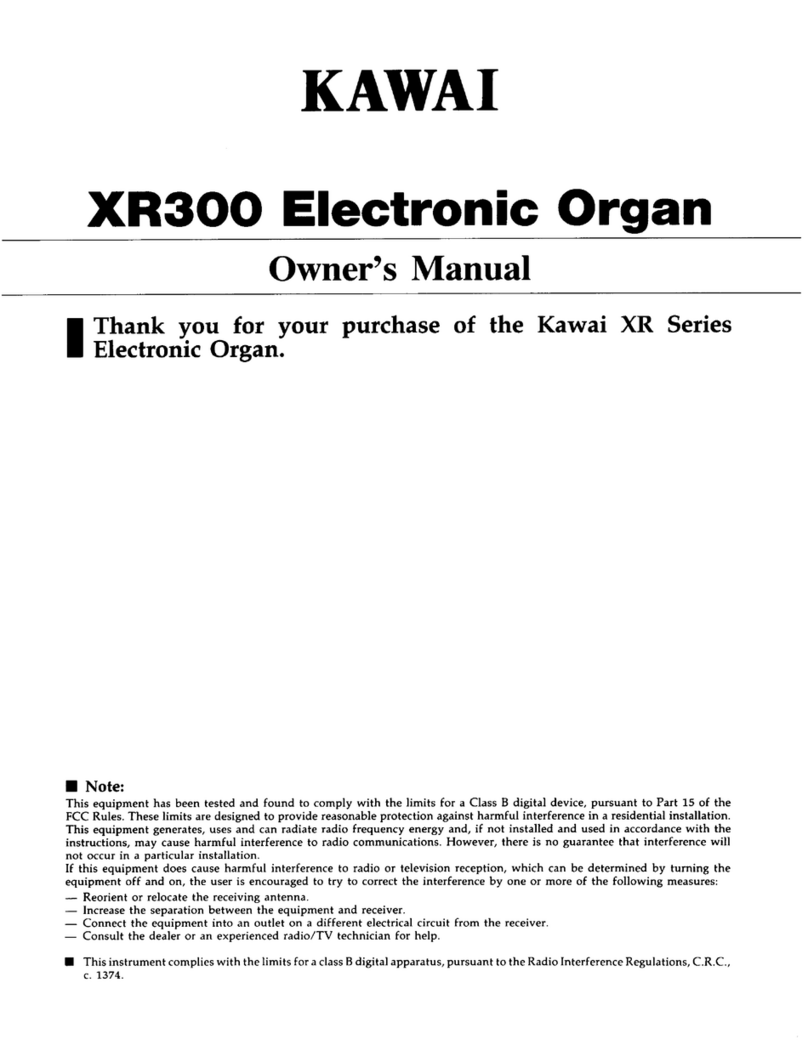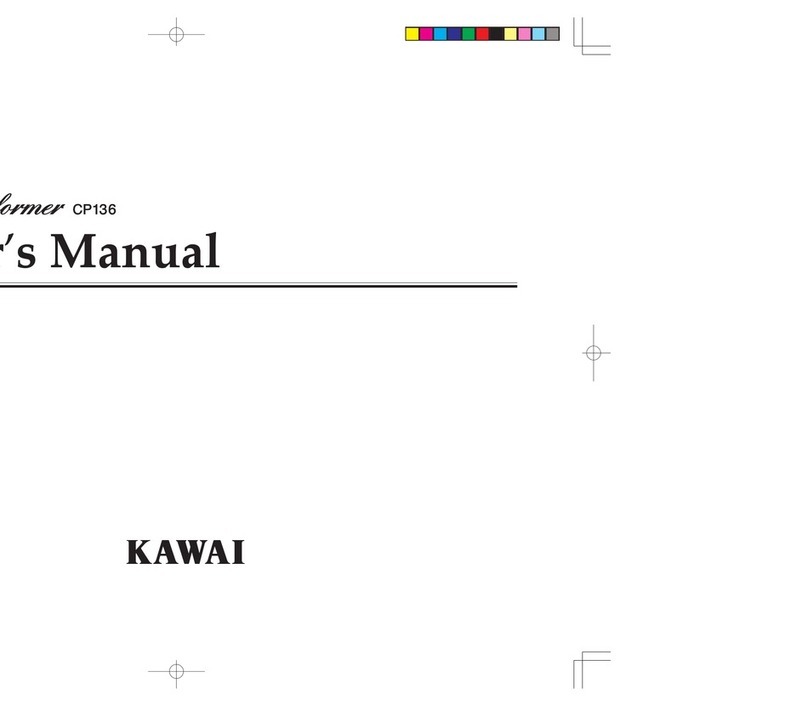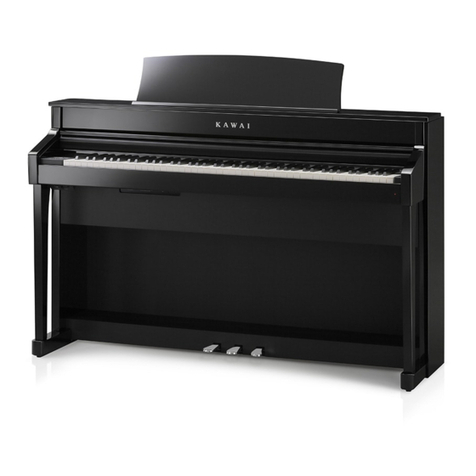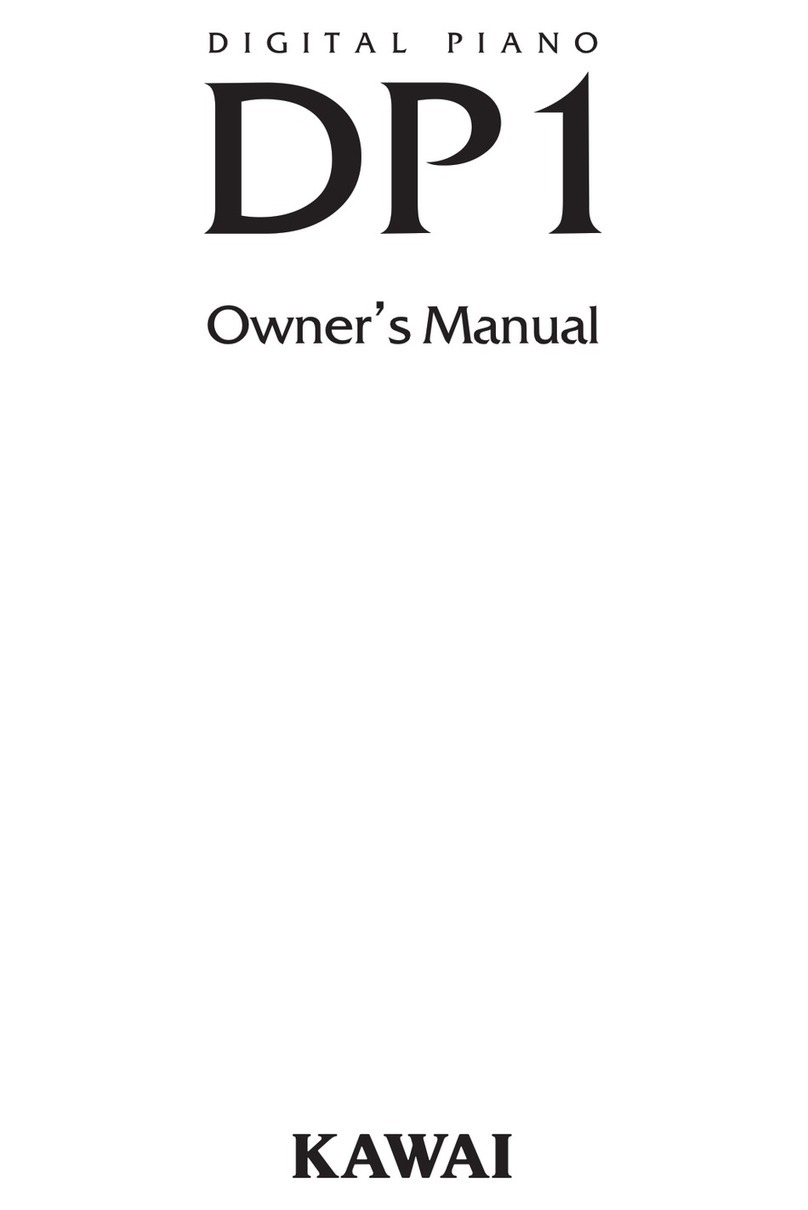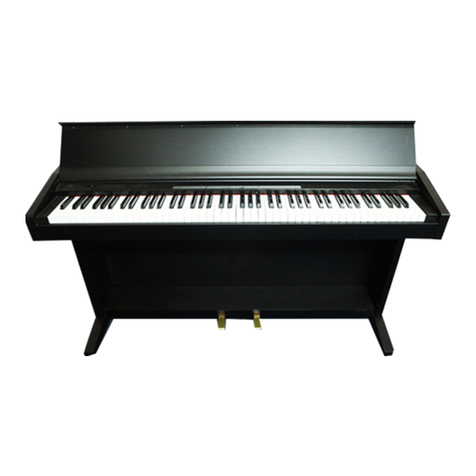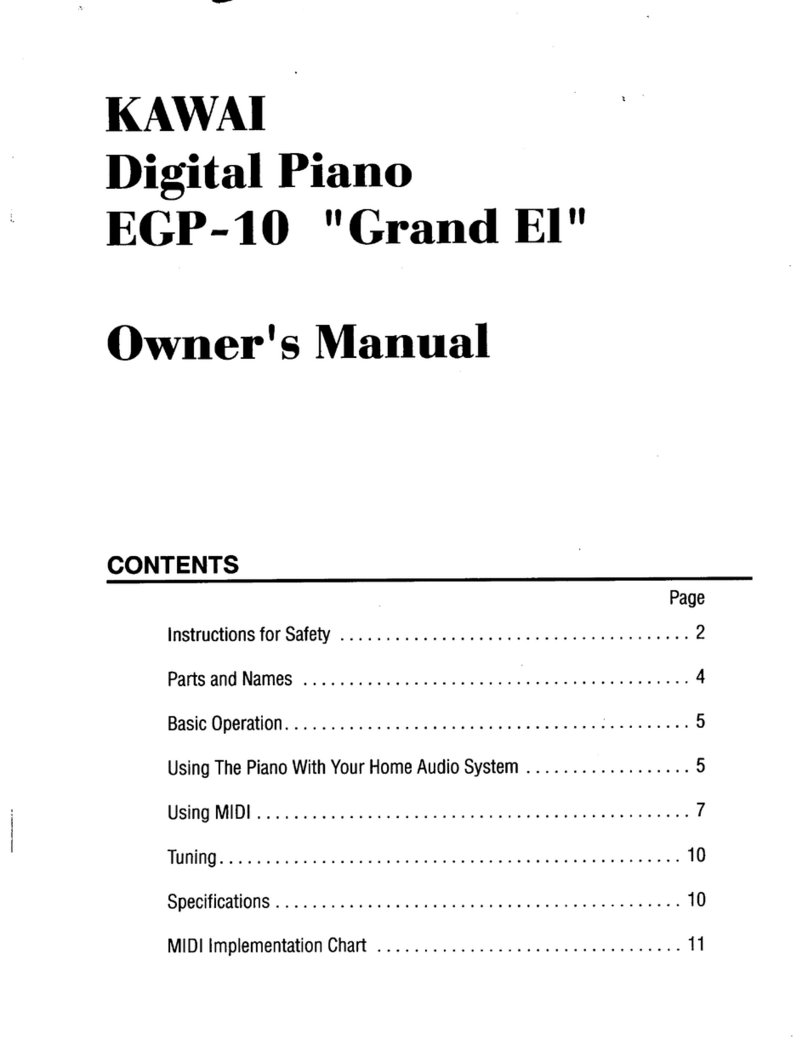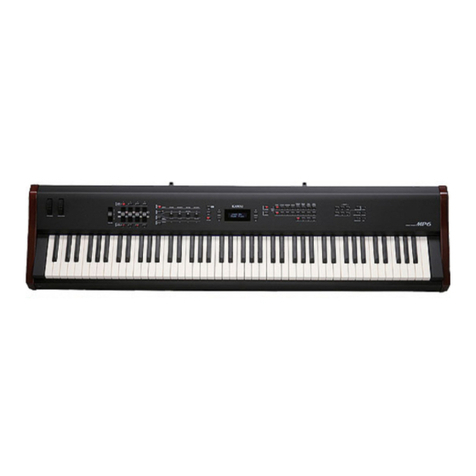Kawai PN90 User manual
Other Kawai Musical Instrument manuals
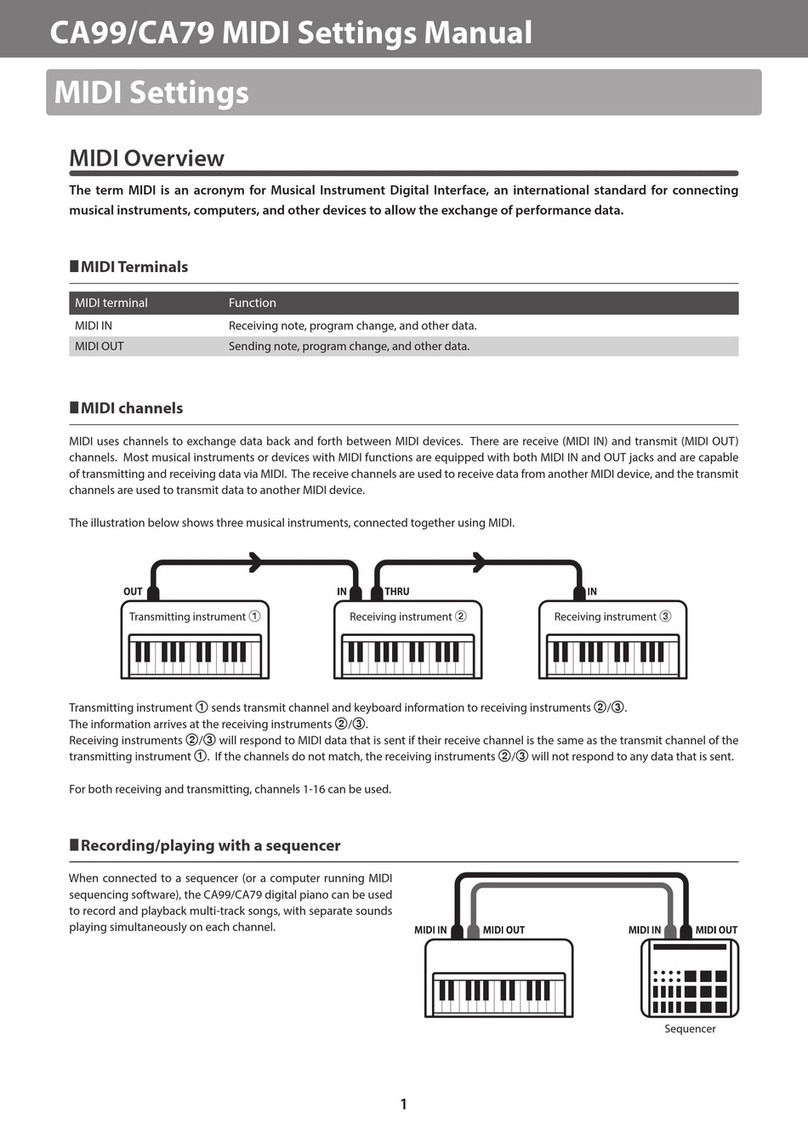
Kawai
Kawai Concert Artist CA99 Manual

Kawai
Kawai Concert Performer Series Digital Piano CP117 User manual

Kawai
Kawai Concert Artist CA15 User manual
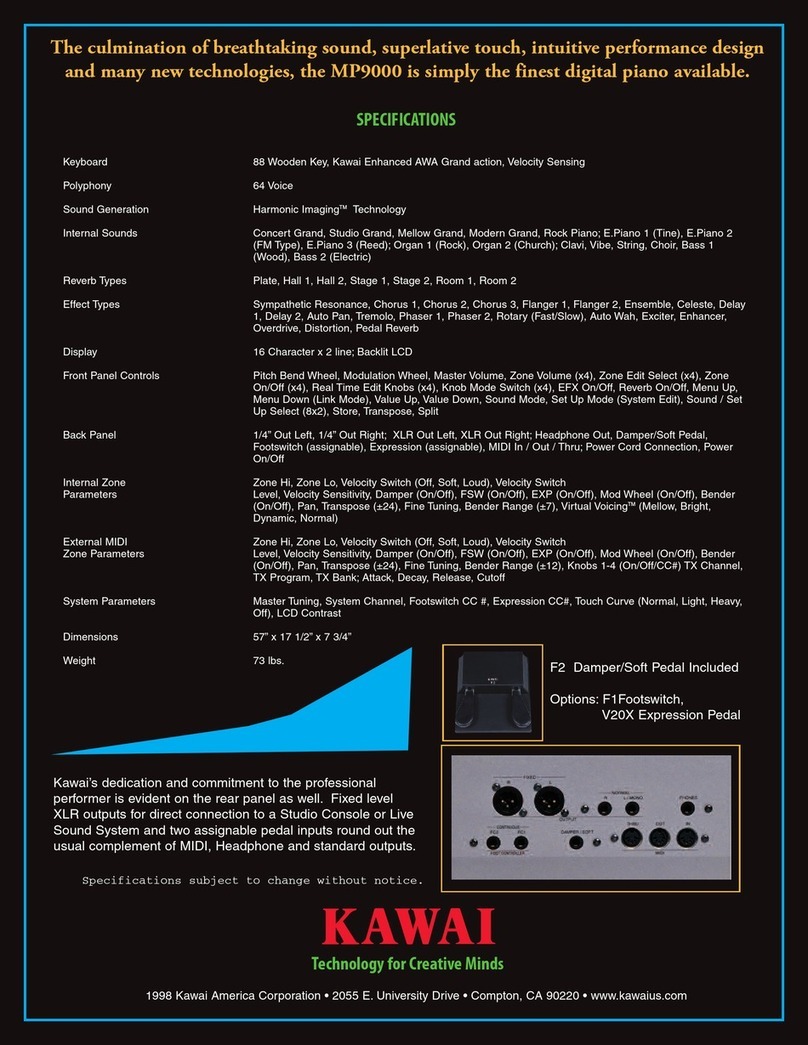
Kawai
Kawai MP9000 User manual

Kawai
Kawai ES100 User manual
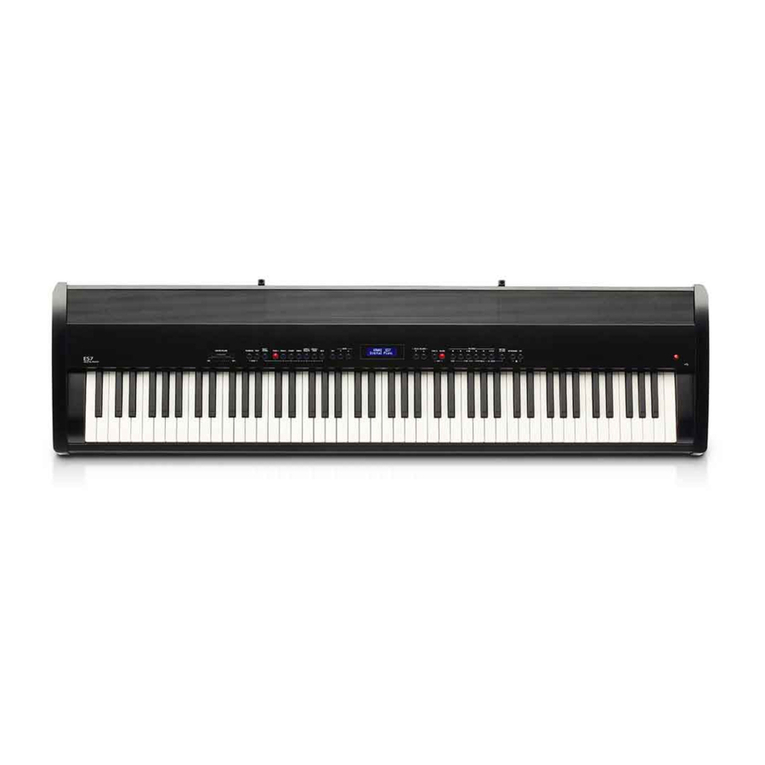
Kawai
Kawai ES7 User manual

Kawai
Kawai CE220 User manual

Kawai
Kawai CN301 User manual
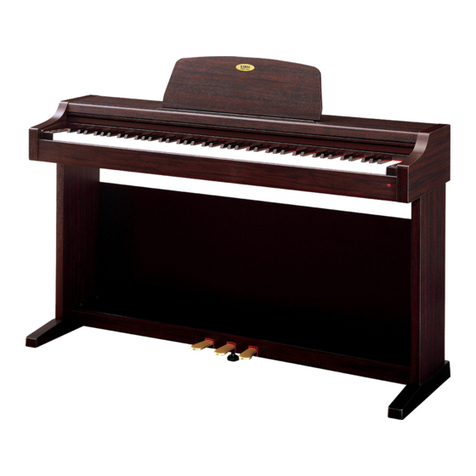
Kawai
Kawai CN2 User manual
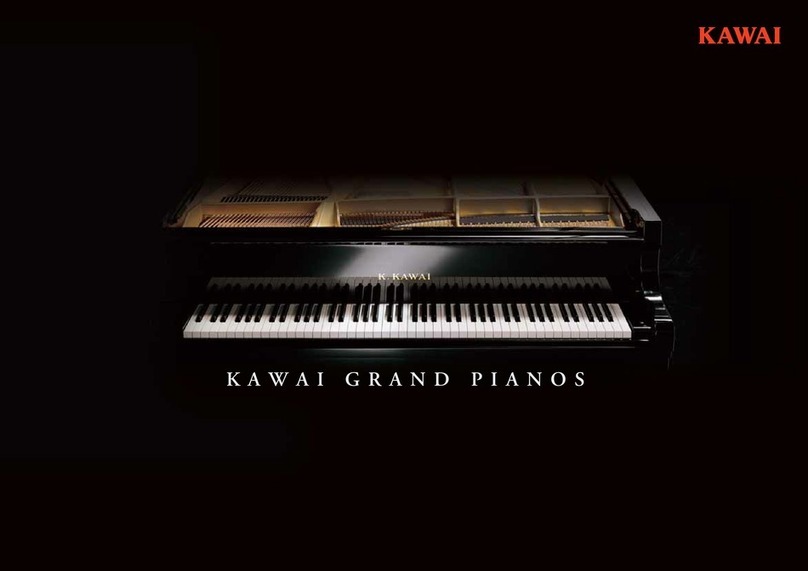
Kawai
Kawai EX User manual
